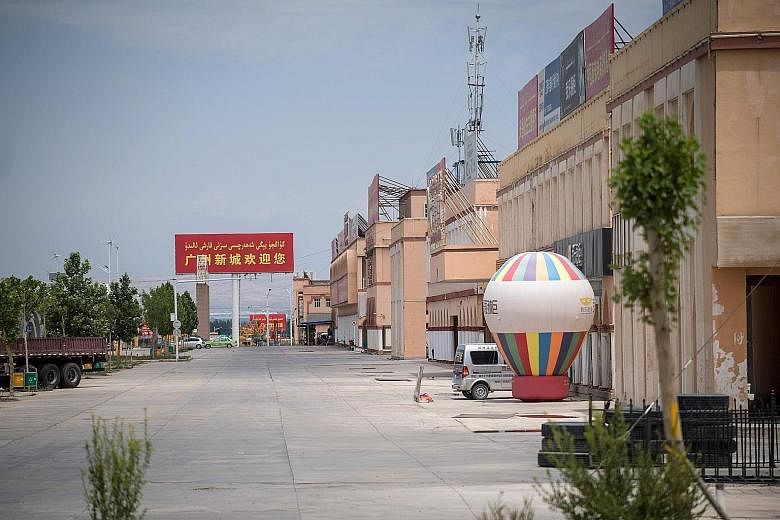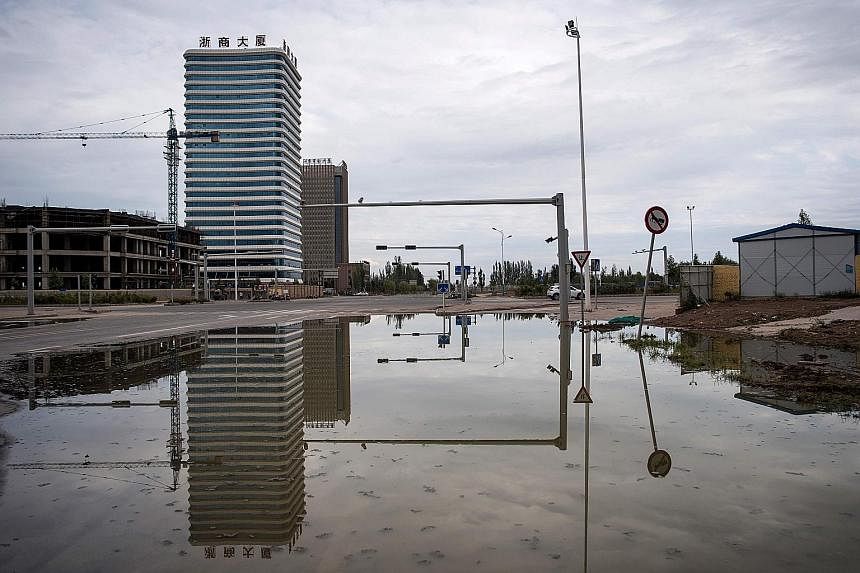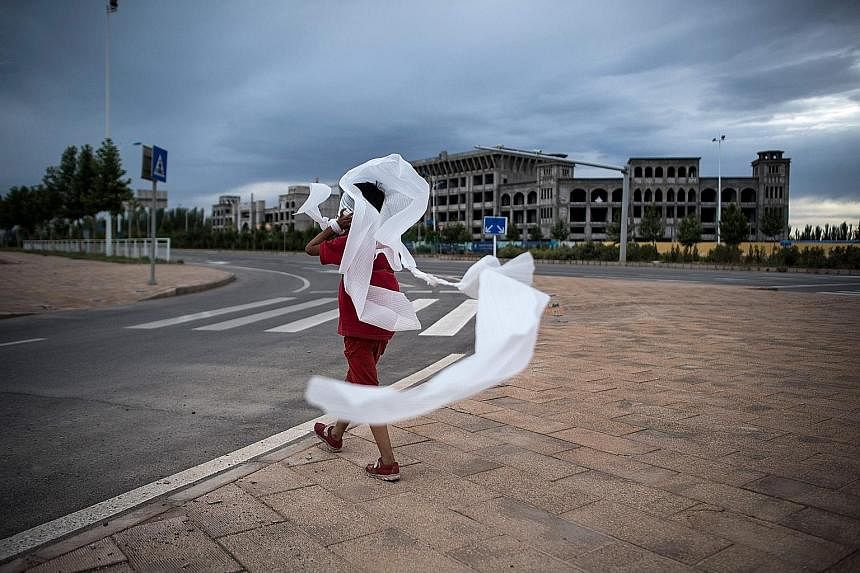KASHGAR (China) • The future of economic development in China's far western Xinjiang region lies behind the shattered glass door of a welcome centre in the ancient Silk Road city of Kashgar.
Inside, a dusty model depicts a modern development with wide, tree-lined boulevards and a pair of twin skyscrapers - but outside, the project remains a ghost town reflecting Beijing's struggle to bring prosperity to the restless region.
Dubbed "Shenzhen City" after the bustling southern port city that financed it, the more than 200,000 sq m development is part of a government project to stabilise Xinjiang with economic stimulus. Beijing has paired promises of wealth with strict controls on personal and religious freedoms in an effort to quell ethnic strife between the Han Chinese majority and the region's mostly Muslim Uighur minority.
Outside the welcome centre, the plans for a vibrant oasis on the western edge of the Taklamakan desert stood like a mirage. The half-finished landmark buildings jut out of a rubble-strewn construction site.
Many such ambitious projects around Kashgar have stagnated despite government plans to bring the poverty-stricken region's economy on a par with the rest of the nation.
To do so, Shenzhen and 18 of the country's other wealthiest cities and provinces have been required to pump a fraction of their gross domestic product (GDP) into Xinjiang under a "pairing assistance" programme. The rationale is "if you can improve people's economic conditions, they will become less politically restive", said politics lecturer Han Enze at the University of London's School of Oriental and African Studies. But "if you look at the ground, the story in Xinjiang is a failure", he said.
In 2010, a year after deadly riots in Xinjiang's capital Urumqi killed about 200 people, the authorities rolled out the "pairing assistance" programme to raise the region's per capita GDP to the national average within five years. By the end of 2015, cities such as Beijing and Shanghai had invested some US$8.5 billion (S$11.5 billion) in the region, according to the official Xinhua news agency.
-
US$8.5b Amount that cities like Beijing and Shanghai had invested in the Xinjiang region by the end of 2015.
In 2014, President Xi Jinping shifted the focus back to security after Uighurs perpetrated a series of violent attacks across the country, killing dozens.
Two years later, the gap between Xinjiang and the rest of the country had grown wider, with its per capita GDP expanding about 18 per cent more slowly than the nation's as a whole during the five-year period after the assistance programme began, based on calculations by AFP using government statistics.
Another project lies largely abandoned across town: "Guangzhou New City", a 1.5 million sq m "urban centre" in suburban Kashgar funded by the wealthy southern province of the same name. When the development opened in 2012, promotional materials promised 20,000 jobs and housing for up to 80,000 people, roughly 15 per cent of Kashgar's population. But local officials had to beg businessmen to come, said Pakistani trader Lal Muhammad, who signed a three-year lease for US$1,000, which he soon abandoned. He said the ubiquitous police checkpoints encircling the city had made it difficult for customers to come and go.
Hong Kong University of Science and Technology academic Ji Yeon Hong, an expert on Xinjiang, said that while fears of violence deter investment and development, the projects "seem unrelated to what the local population needs".
Xinjiang's ever stricter security may also be negatively affecting businesses, said Mr Adrian Zenz, an expert on Chinese security at Germany's European School of Culture and Theology. "Regular businesses and manufacturing there are no longer competitive due to the added expenses caused by security measures," he said.
But Mr Zou Zebin, owner of a high-end furniture store in Guangzhou New City, believes the "cities" can still replicate their namesakes' success, as Kashgar is a key part of China's Belt and Road Initiative, a massive global infrastructure project to revive the ancient Silk Road. "I think in three years, we'll see the benefits."
AGENCE FRANCE-PRESSE



